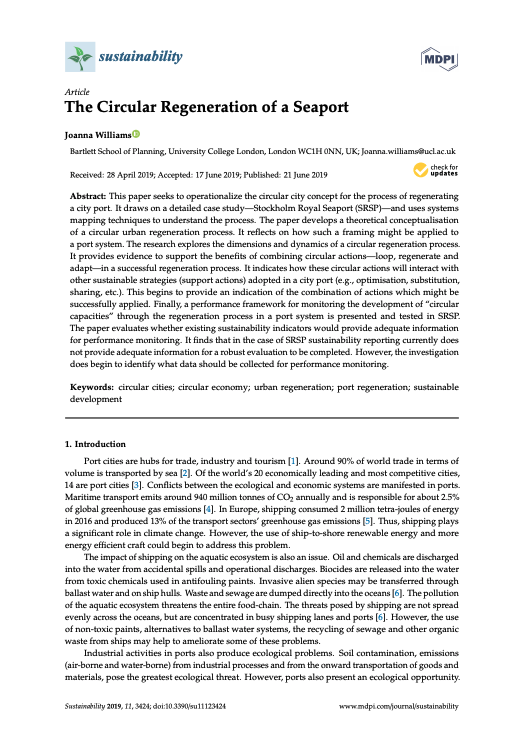Abstract
This paper seeks to operationalize the circular city concept for the process of regenerating a city port. It draws on a detailed case study—Stockholm Royal Seaport (SRSP)—and uses systems mapping techniques to understand the process. The paper develops a theoretical conceptualisation of a circular urban regeneration process. It reflects on how such a framing might be applied to a port system. The research explores the dimensions and dynamics of a circular regeneration process. It provides evidence to support the benefits of combining circular actions—loop, regenerate and adapt—in a successful regeneration process. It indicates how these circular actions will interact with other sustainable strategies (support actions) adopted in a city port (e.g., optimisation, substitution, sharing, etc.). This begins to provide an indication of the combination of actions which might be successfully applied. Finally, a performance framework for monitoring the development of “circular capacities” through the regeneration process in a port system is presented and tested in SRSP. The paper evaluates whether existing sustainability indicators would provide adequate information for performance monitoring. It finds that in the case of SRSP sustainability reporting currently does not provide adequate information for a robust evaluation to be completed. However, the investigation does begin to identify what data should be collected for performance monitoring.


